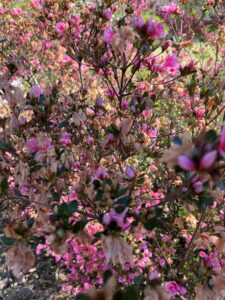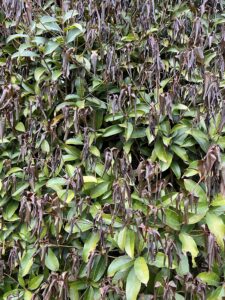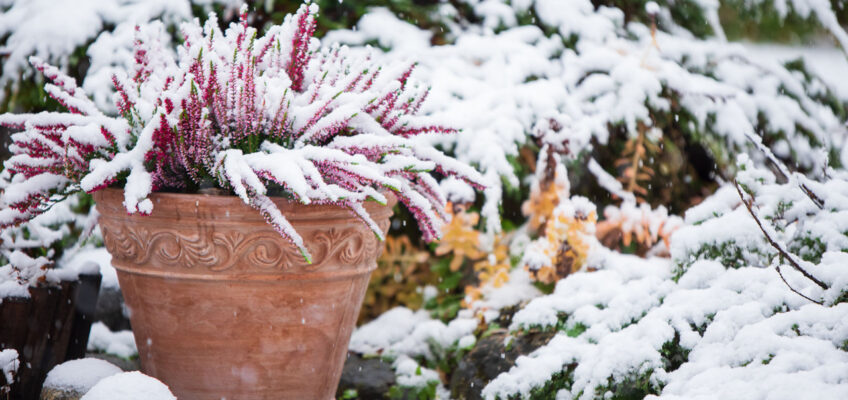Will my shrub/tree/herbaceous perennial “come back” (survive the 2022-23 winter injury)? It’s a question I’ve been asked frequently–a simple question with a complex answer.

Most plants grown in USDA hardiness zones for which they are recommended will normally survive winter with little or no damage. But the winter of 2022-23 was different—in a sense a “perfect storm.”
Fall 2022 was unseasonably warm. The above average temperatures persisted into December throughout much of the Southeast. Then suddenly an Arctic blast in late December saw temperatures fall into the single digits and below zero in places. Many plants, normally hardy, were damaged because they were not fully acclimated (hardened) to winter temperatures. The cold, along with desiccating winds, defoliated many “evergreens” and killed buds, branches, and stems. Bark split on some species. The extent of the visual damage wasn’t evident for several weeks. It may be late spring or early summer before the final verdict is in.
Unfortunately, the abnormal cold was then followed by a period of above normal temperatures in January and February. By late February and early March, these warmer than normal temperatures induced early flowering and premature growth in many species. Many spring-flowering plants bloomed and leafed out much earlier than usual. And, then came the cold again—several nights of below freezing temperatures. Many plants not damaged by the Arctic blast were damaged by mid-March freezes—flowers were ruined and new growth “burned” on numerous species. The extent of this damage was evident almost immediately, but in all likelihood is more cosmetic and will not cause permanent injury to the plants.



Leave a Reply